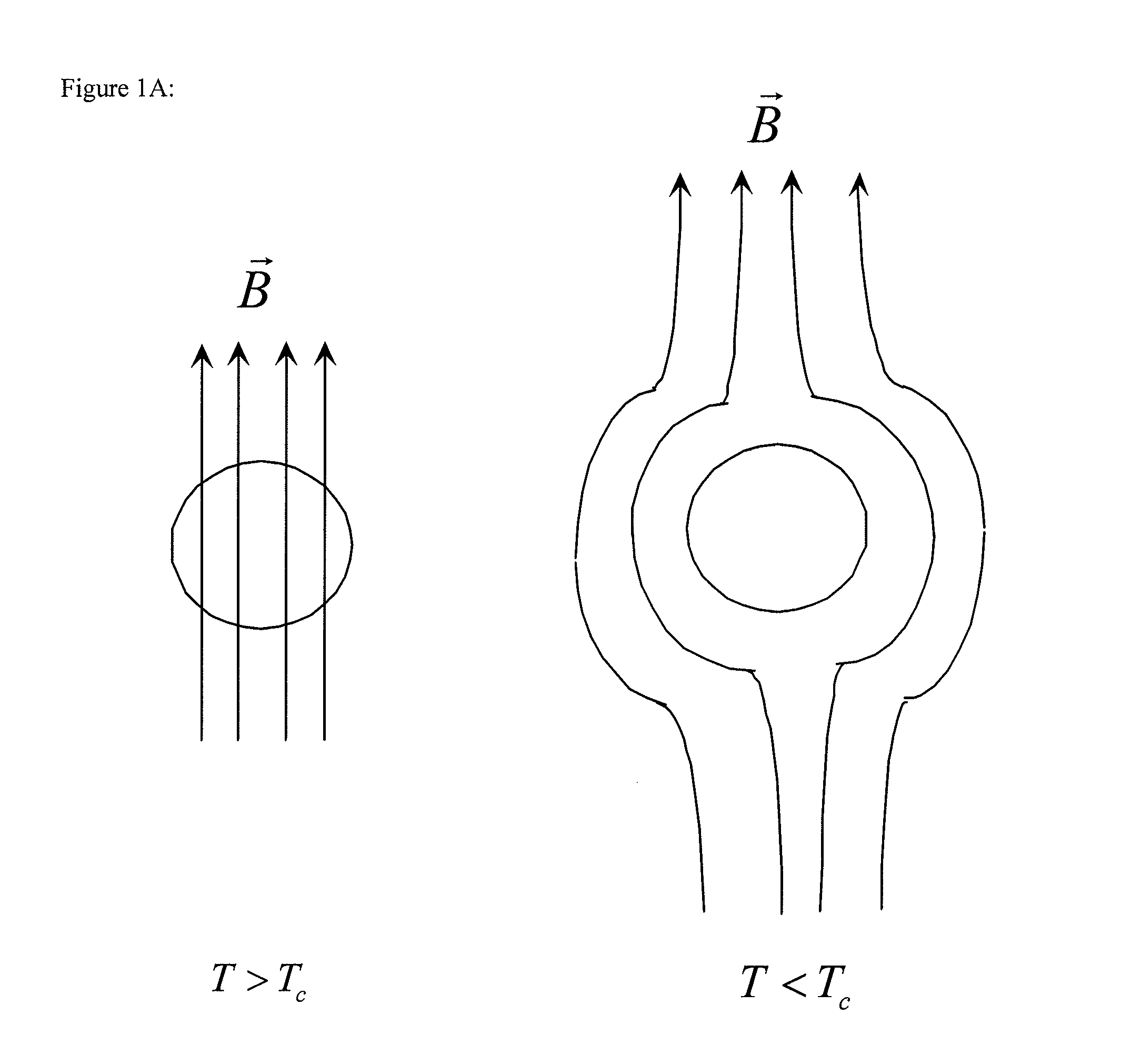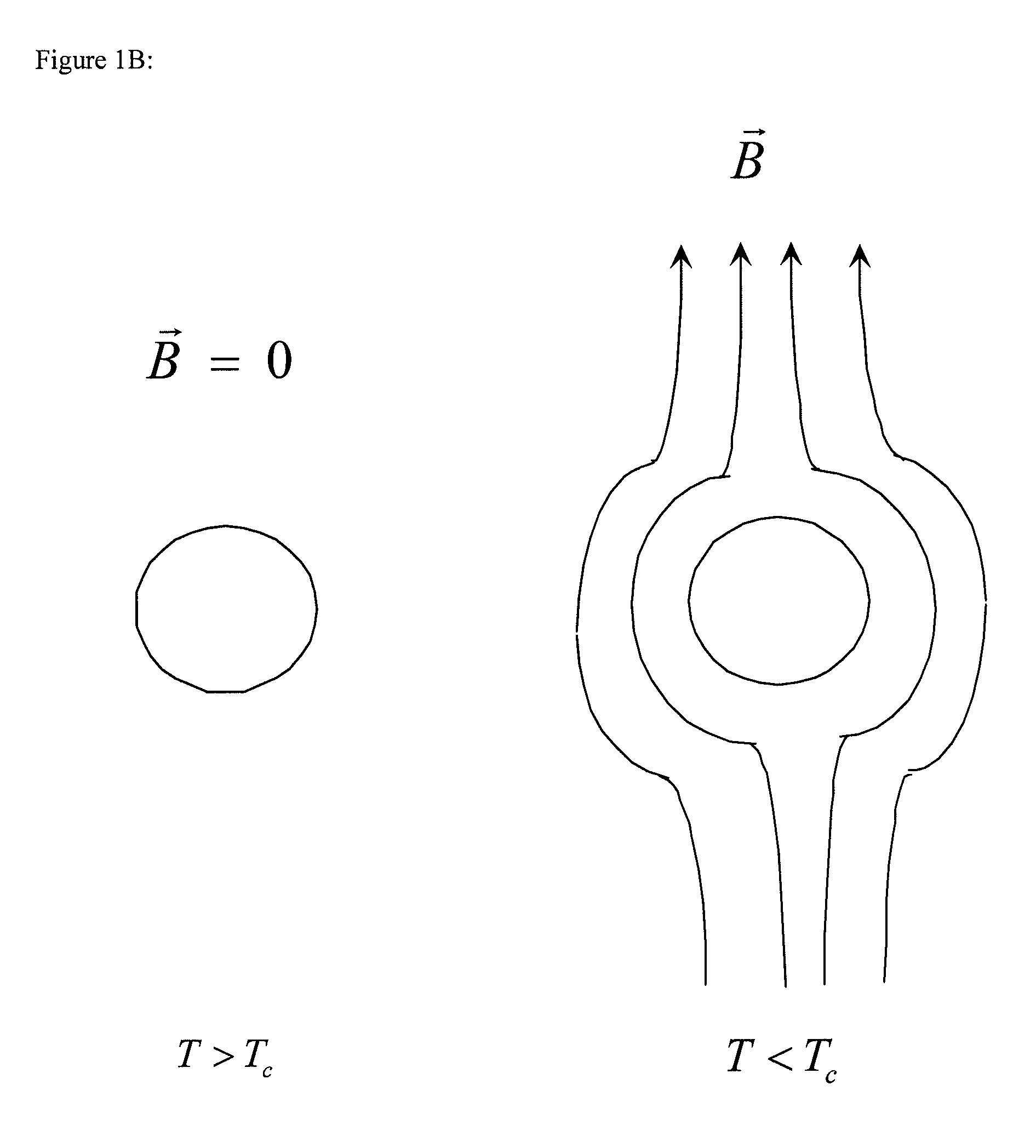Superconducting motor
a superconducting motor and superconducting technology, applied in the direction of superconducting magnets/coils, superconductor devices, magnetic bodies, etc., can solve the problem of largely undeveloped technology
- Summary
- Abstract
- Description
- Claims
- Application Information
AI Technical Summary
Benefits of technology
Problems solved by technology
Method used
Image
Examples
Embodiment Construction
[0017]In certain embodiments described herein, a new oscillator based on the phenomenon of superconductivity is realized and identified for its many potential applications (e.g., oscillators, sensors, generators, and motors). This oscillator is based on the Meissner Effect of superconductivity, and is used to create a “Superconducting Oscillator” that can be used to apply a time-varying force to a magnet, which has many potential applications among which are motors of all types, and various sensors. Certain embodiments described herein exploit one property which has many potential applications (e.g., in oscillators, sensors, generators, and motors).
[0018]The absence of electrical resistance is only one of the properties exhibited by superconductors below the critical temperature. Another very striking effect is the Meissner Effect, named after W. Meissner (see, W. Meissner, R. Ochsenfeld, Naturwiss, 21: 787 (1933)). It was observed that when a superconducting material is cooled in t...
PUM
 Login to View More
Login to View More Abstract
Description
Claims
Application Information
 Login to View More
Login to View More - R&D
- Intellectual Property
- Life Sciences
- Materials
- Tech Scout
- Unparalleled Data Quality
- Higher Quality Content
- 60% Fewer Hallucinations
Browse by: Latest US Patents, China's latest patents, Technical Efficacy Thesaurus, Application Domain, Technology Topic, Popular Technical Reports.
© 2025 PatSnap. All rights reserved.Legal|Privacy policy|Modern Slavery Act Transparency Statement|Sitemap|About US| Contact US: help@patsnap.com



